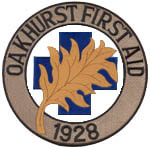ABOUT 911
DONATIONS
EQUIPMENT
HISTORY
LINKS
MEMBERSHIP
NEWS

OFFICERS
RIG PICS
TRAINING

District #1 FIRE
COMMISSIONERS
CONTACT US!
|
HOME
ABOUT 911 DONATIONS EQUIPMENT HISTORY LINKS MEMBERSHIP NEWS 
OFFICERS RIG PICS TRAINING 
District #1 FIRE COMMISSIONERS CONTACT US!
|
 What Should I Do?
|

DON'T wait for someone else to do it. If you have the knowledge--YOU are the one who should take the responsibility to call 911! Remember that in life-threatening situations--EVERY second counts!
The information provided on this page is only meant to be a basic guideline of WHAT TO DO for the following emergencies before help arrives. Please be patient as the empty ones will be filled in soon!
Occurs due to varying trauma. Serious Shock can be life-threatening Disorientation, slurred speech, weakness on one side of body--may become unresponsive Call 911--Rescue victim Clear a path! Pull to the side of the road! Activate the 911 response system immediately! Administering CPR to an unresponsive person can keep them alive simply by giving them the oxygen and blood flow they need to sustain their vital systems until emergency medical help arrives. Remember the general rules:
|
|
72 Larkin Place Oakhurst, New Jersey 07755 732-229-7354 www.oakhurstfirstaid.org |
| Back To Top | Home Page |
| © 2001 tealsurf.com |